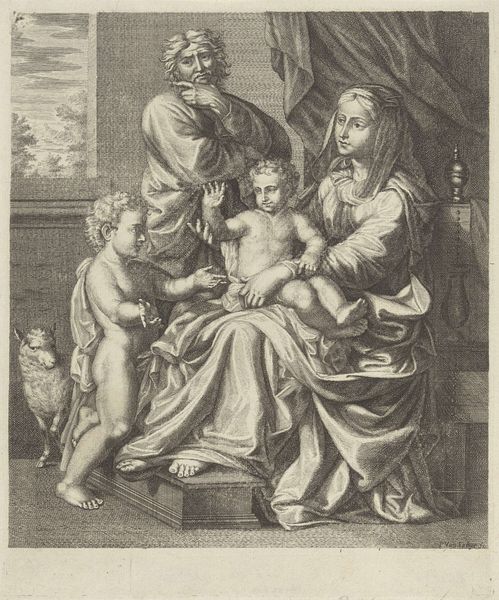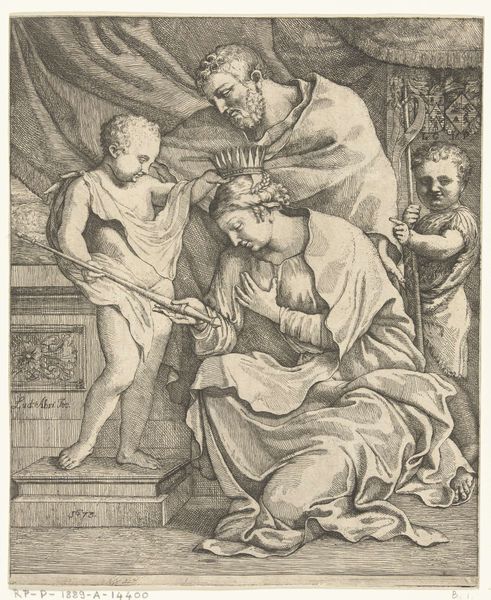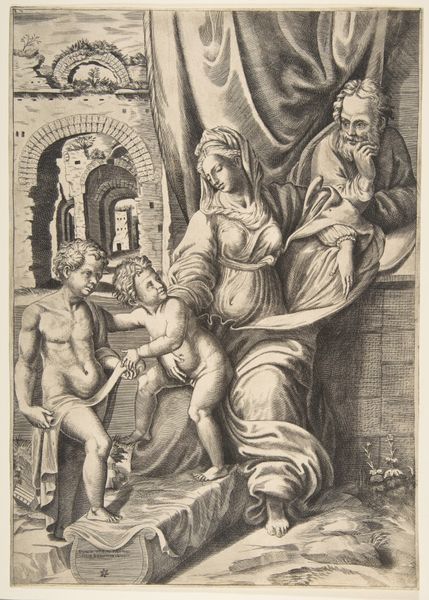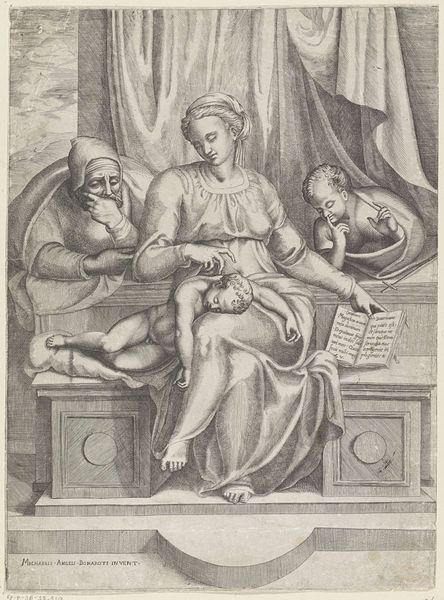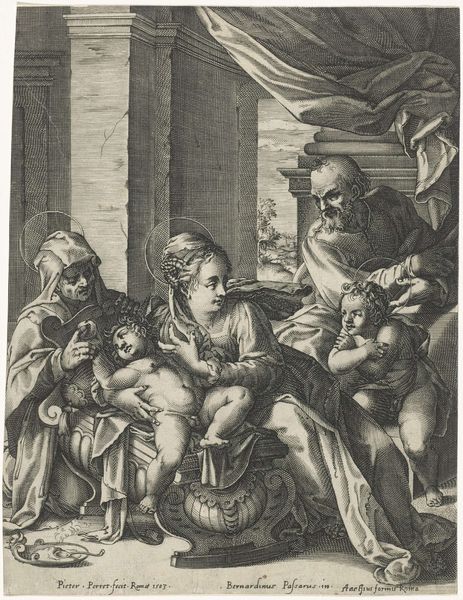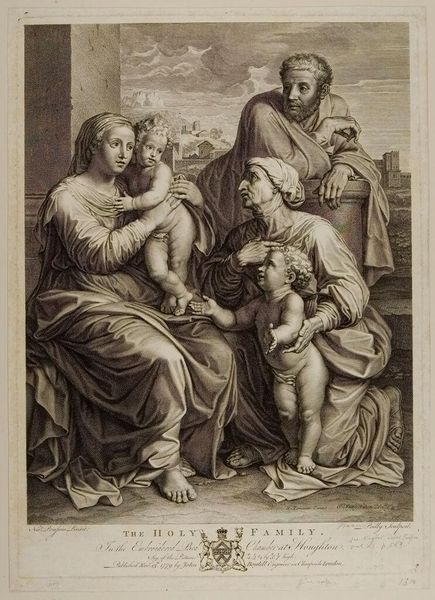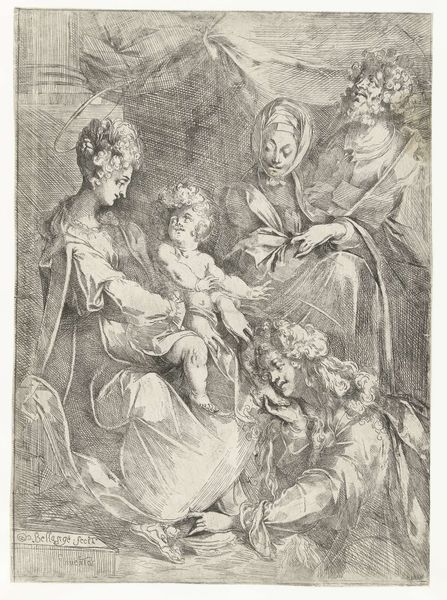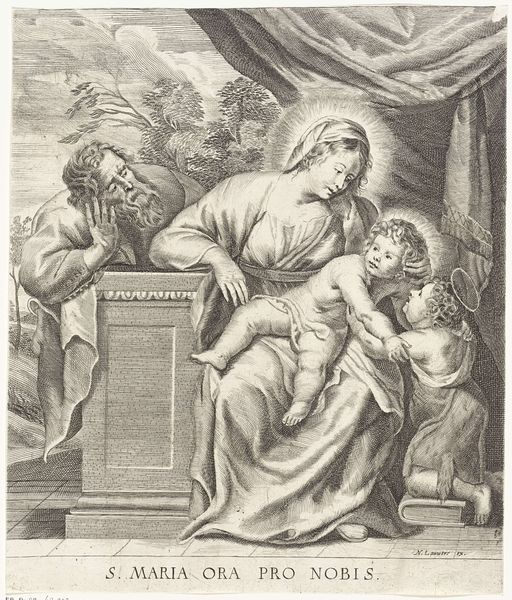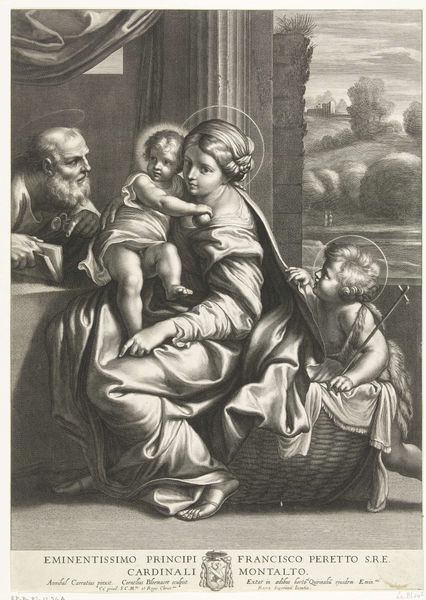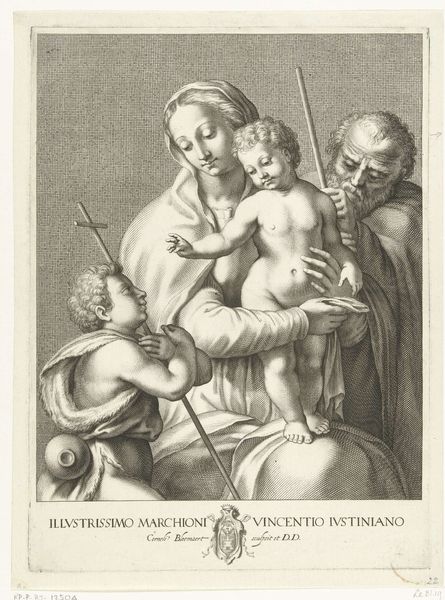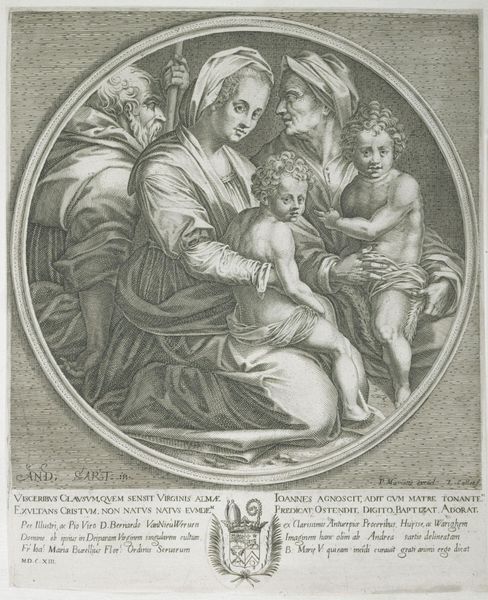
print, engraving
#
portrait
#
baroque
# print
#
figuration
#
group-portraits
#
line
#
history-painting
#
engraving
Dimensions: height 326 mm, width 245 mm
Copyright: Rijks Museum: Open Domain
Curator: This engraving from 1661, titled "Holy Family with Saint John the Baptist as a Child," is attributed to Alexander Voet II and depicts a scene with the Virgin Mary, Jesus, Joseph, and John. The work’s in the Rijksmuseum's collection, a fine example of baroque printmaking. Editor: It strikes me immediately as a meticulously crafted work, but emotionally rather cool. The figures are well-rendered, but there is something a bit detached in their expressions. Is that characteristic of the time? Curator: Perhaps. Line engraving like this was about precise reproduction. Prints served a crucial role, allowing wider audiences access to imagery and styles developed by leading painters, democratizing art to a degree, by employing skilled artisans in workshops. Note the details of the drapery and how the engraver simulates tonal gradations through varying the density and weight of the lines. It shows sophisticated workshop practices geared toward large-scale distribution. Editor: Exactly. Considering the period, that democratization, however limited, matters. I can't help but see this within a matrix of religious orthodoxy and its inherent social structures. The idealization of the family is so potent. But it’s a very specific family structure presented, right? What’s being left out, whose stories aren't represented? Single mothers? Non-traditional families? It's powerful because it defines norms and expectations within its historical and political context. Curator: Of course, it's vital to situate such images in their contemporary contexts. But it also shows a deep understanding of technical skill, of production. For example, examine how Voet used hatching to sculpt forms from light and shadow, thus translating a painting—or design—into a reproducible medium using readily available materials and workshops specializing in the reproduction of such designs. These reproductive techniques underpinned dissemination of key Counter-Reformation iconography across Europe and beyond. Editor: Right, and how this technology reproduces not just images, but ideals. Religious doctrine intersects with labor, materiality, power, and social control. Looking closer, one observes how line engraving translates religious imagery into tools that buttress cultural ideologies concerning the ideal of family at that time. Curator: Precisely. This piece allows us to explore the artistic, economic and socio-cultural processes around its making. Editor: Absolutely. Art doesn't exist in a vacuum; every brushstroke or, in this case, line carved into a plate speaks to the culture from which it emerges. Thanks to those artisans using those technologies, "The Holy Family" lives on and can offer us so much knowledge!
Comments
No comments
Be the first to comment and join the conversation on the ultimate creative platform.
